We all need to get outside in the winter… there’s so many fun things to do in the snow! But, how do you stay warm and make sure your kids are staying warm in all that winter play? Read on for some simple tips on how to dress kids for snow and cold weather this season.
How to stay warm in the snow? …the quick answer:
- Dress in layers
- Use a good quality snow suit (water proof and wind proof outer layer)
- Don’t wear jeans
- Use thick warm socks or layer socks
- Accessorize with gloves, mittens, toques, buffs, even goggles
- Try a balaclava
- Consider hot hands or hand warmers inside mittens
- Splurge on heated socks, boots, or gloves
- Plan your outing to be short or have warm up breaks
- Fuel up with snacks
- Have fun!
Coaxing kids out the door in the wintertime
It can be hard enough sometimes to motive ourselves and our kids out the door. But add freezing temperatures and the time it takes to climb into all that snow gear and sometimes the couch just seems so much better! But, it totally is possible to make this task easier and to be warm outside in the winter…
Whether you and your kids are heading to the ski hill, the toboggan hill, or just the backyard, if it’s cold and snowy outside, all these tips apply!
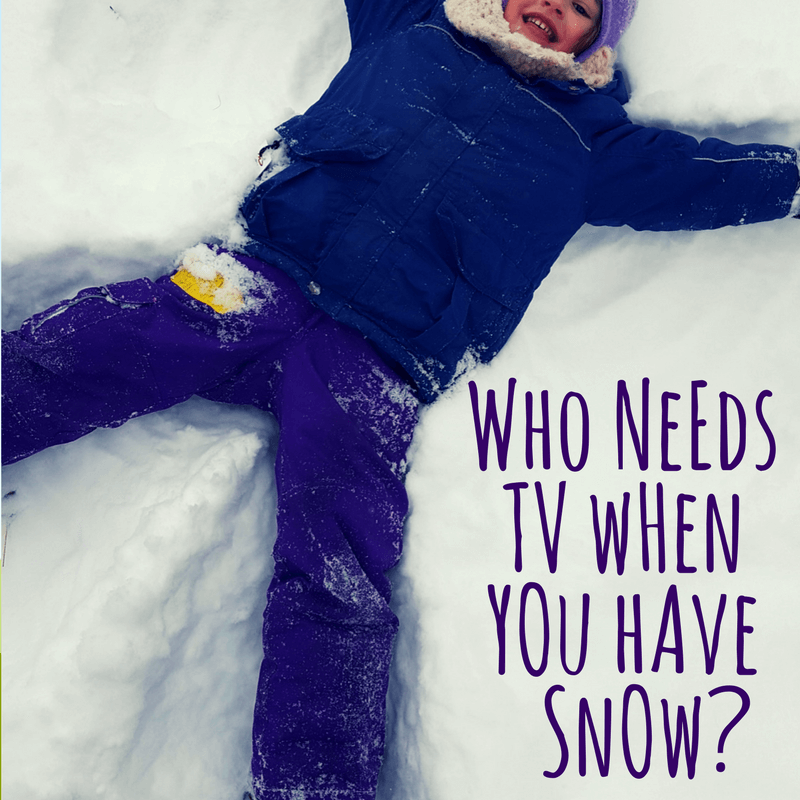
(This post contains affiliate links for your convenience. As an Amazon Associate I earn from qualifying purchases. If you make a purchase through my link I receive a small commission at no added cost to you. See my policy page for more information)
Winter Clothes for Kids (and some gear too):
Base Layers and Long Underwear
Dress in layers! To do it right, you should wear a wicking or quick-dry layer closest to your skin, then put your cozy fleecy layer over that.
My husband and I really like our base layers made from Merino Wool. Merino Wool is a natural product (not a synthesized fiber). It is very warm, soft, breathable, and helps wick moisture away from the skin.
You should be able to find good quality base layers (long underwear) at outdoor stores, fitness stores, and on-line.
Thriftly Mom Note: your kids don’t need performance materials just to play in the backyard! Tight fitting pajamas, tights, or leggings all work as well as a base layer, especially if they won’t be in sub-freezing temperatures for hours.
Here’s a great demonstration of getting dressed to go outside on a cold weather day!
The Snow Suit
While I don’t recommend buying top of the line brand name clothing for kids, I will recommend you only choose coats that have an appropriate cold weather rating for your climate.
Aside from being insulating, you’ll want coats and pants that block the wind and be waterproof.
For little kids and toddlers, a one-piece snowsuit is quick and easy. They won’t get snow up their back when they roll around in the snow and getting undressed for emergency bathroom breaks will be much easier! If you’re up for it, you too could sport a trendy, or retro, one-piece yourself!
The Columbia down-filled one-piece snow suit is what all my toddlers wore through our very cold Canadian winters. This suit was such good quality that it lasted through all 3 kids wearing our various sized pieces. As a new parent, I was shocked a tiny snow-suit could cost so much. But, after seeing it keep 3 kids warm (and others after it was passed along) made the initial purchase worth it!
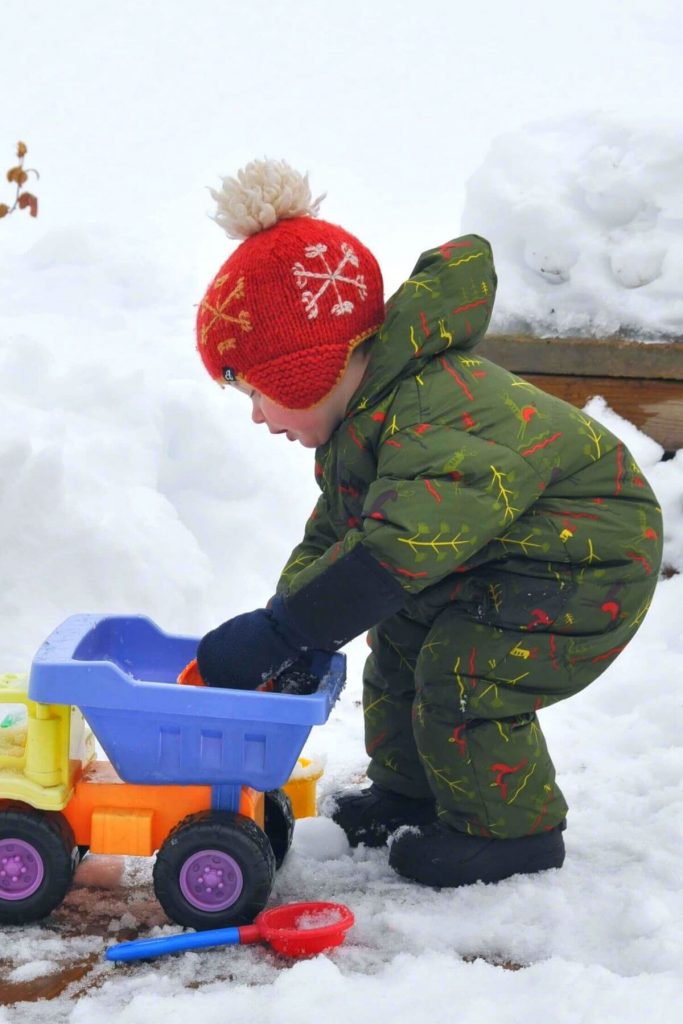
For older kids I prefer snow pants with bibs for the same reason. Bibs keep their body warmth in and snow out!
Snow Pant / Boot tip: To tuck or not to tuck? I tended to tuck the inside cuff into the boot and pull the outer shell down over the boot. Or, if the bottom of the snow pants can be tightened, make sure these are tight around the ankle to keep snow out.
Puffy or No-Puff Tip: If you spend some time snowsuit shopping you’ll quickly notice that the ‘puffyness’ of a jacket can really vary. All of my kids prefer a jacket with less poof in the arms. I agree with them. They have much better range of motion outdoors with a slimmer fitting jacket (and pants too).
Don’t choose jeans
When it is cold, jeans can seems even colder. Long johns under jeans or snow pants over jeans is much warmer. For some readers, this tip might seem obvious, but I am always surprised at how many people I see out on the ski hill or playing with their kids in the snow while wearing jeans!
Shopping Tip: Here in Canada we can purchase fleece-lined jeans (Marks Work Wearhouse has these)… so much warmer!
Lots of Socks
Purchasing a quality pair of ski socks will really help keep feet warm and dry. While thick socks are good for retaining heat, they shouldn’t be so thick as to bunch up which can cause discomfort in a tight fitting boot.
If skiing or snowboarding, taking boots off during an inside break can help dry out boots and socks and will be helpful if heading back out shortly.
I like to pack extra socks when we’re out for an extended winter adventure. At the end of a long cold day on the ski hill or outside, just changing into a new pair of socks can be such a pleasure and help the feet warm up quicker.
Mom Tip: If boots are damp after playing outside, put them on the heat vent or with a fan blowing on them to make sure they’ll be dry and ready for the next outside play
Toques and Hats
These extras are essential in the extreme cold! And, they’re a big help in staying warm in the cooler above-freezing temperatures too!
For your head: For older kids, a toque that fits low over the ears is best. For toddlers and young children look for one with ear flaps that will tie or Velcro under the chin. A thick fleece lined hat is great to help kids stay warm and one that ties under the chin will prevent it from falling (or getting pulled) off.
When choosing head wear consider how it will fit under a helmet (if that’s going to be an issue). A balaclava works well under bike and ski helmets. Not only is it safest to wear a helmet when skiing, snowboarding, tobogganing, and skating, but helmets will also block the wind and help keep you and your kids warm.
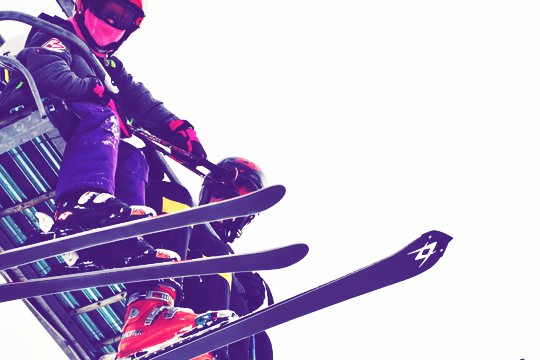
Mittens and Gloves
For your hands: I like to wear a thin pair of mini gloves under my mittens and I frequently double up the kids’ mittens in the extreme cold. This way hands are extra toasty, and if I need to do something requiring dexterity (like fixing kid’s zippers, blowing noses, or buckling up boots) my fingers won’t freeze when I pull off my mittens.
And, you can even get thin gloves with touchpad sensitive fingers. So, if I want to use my phone I can keep my gloves on!
Mittens are often warmer than gloves because the fingers are all together sharing their warmth. If your snow tends to be a wet soggy snow, then find mittens that have a waterproof shell or bring along a few extra pairs.
If your littles are prone to pulling off their mittens, you can look for a pair with super long cuffs and put the mittens on under the coat so the snugness makes it very hard for them to be pulled off.
See further down for more toddler and winter clothing tips!
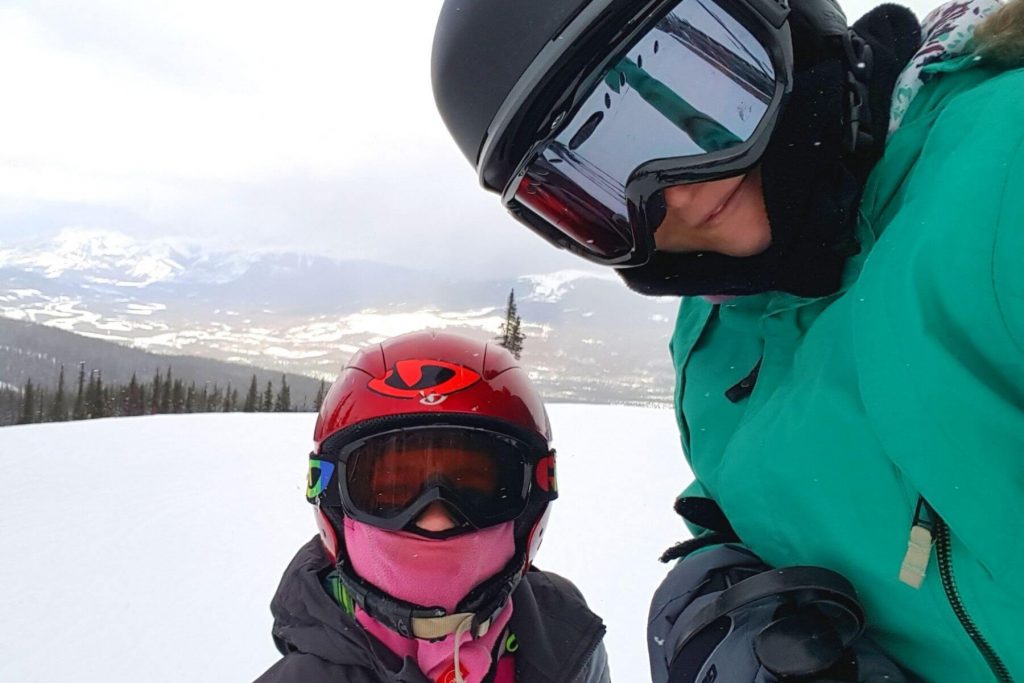
For your face: neck warmers, balaclavas, and goggles
Neck warmers and scarves: Remember that any exposed skin is at risk of frostbite in extreme cold, so wearing a neck warmer (gaiter) or scarf is a must. These help cover the gap around the neck where the jacket stops and the hat or helmet begins. Not only do they protect exposed skin, they can be pulled up to keep the face warm and stop the cold air from getting into the jacket.
Goggles: Goggles help cover more of the exposed face skin. So while they improve visibility, they also help keep the face warmer. My kids wear their ski goggles skiing, but they’ve also chosen to wear them when biking or skating or tobogganing when it’s really cold out as well.
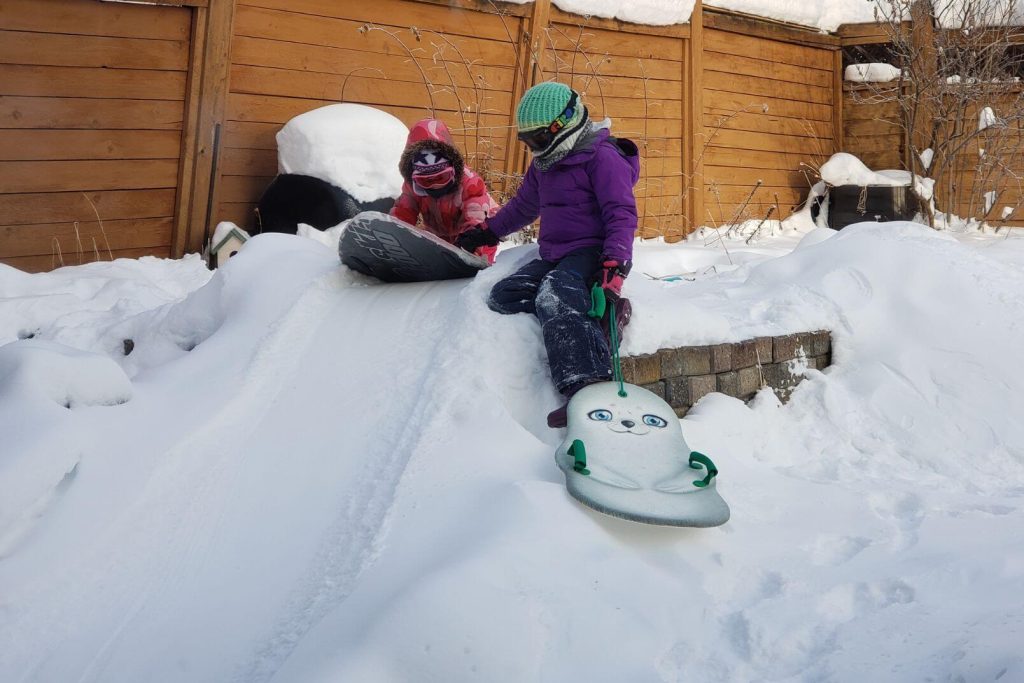
Balaclavas: I don’t wear a balaclava, but my kids do. With a balaclava, kids will get full face warmth and coverage in one piece, ninja style! And yes, our balaclavas have been re-purposed many many times for indoor Ninja play!
Balaclavas also fit nicely under helmets, hoods, bike helmets, (Halloween costumes), and toques for extra warmth.
Pocket hot pads
If you plan to be outdoors for a few hours, you may want to consider having a few of these Hothands on hand. They do not heat up until opened and exposed to air, but once they are activated, the pads will give off heat for a good 4-5 hours.
My kids like to use these when skiing. They put the activated pads right into their mittens or leave them in their pockets for little warm-up breaks. I have even used these camping in the summer when my toes just won’t warm up.
- NATURAL LONG-LASTING HEAT - Odorless, Disposable, Single-Use Item, Do Not Apply Directly to The Skin. TSA Approved. No shaking or kneading required
- TO ACTIVATE - Remove warmer from outer package, shake to activate. Warmer heats up in 15-30 minutes. If heat decreases, expose warmer to air and shake. After use, dispose with regular garbage.
- MULTIPURPOSE WARMERS - Single use air-activated heat packs that provide everyday warmth and are ideal for keeping your body warm when the temperature gets cold. They’re available in several styles designed for your hands, feet, and body.
- WHEN TO USE: Tailgating at Events, Outdoor Sporting Events, Hunting & Fishing, Camping & Hiking, Working in The Yard, Jogging or Taking Your Pet for A Walk. Convenient, Compact, Portable
- Each package contains up to 214 hours of heat
If you’re crafty you might be able to whip up some homemade mini rice packs to heat in the microwave and tuck in pockets before heading outdoors or you can purchase battery powered warmers too.
The fancy extras: Heated boots and socks
My husband, in an effort to make skiing more appealing for me, bought me ski boots with a battery-powered heating attachment. You can also purchase heated socks, insoles, and gloves. You can even buy heated gear that you can control from a app on your phone!
The quality and cost of all these heated items vary quite a bit, but if it means the difference between going outdoors or staying in, they might be worth it for you or your kids!
FAQs for keeping Toddlers warm outside:
Much of the above advice in this article also applies to toddlers, but I’ve added some specifics here if you’re looking for a bit more detail.
How to keep toddlers warm in the winter:
- Use layers. Pyjamas under clothes is an easy way to layer.
- The outer layer (coat/pants) should be wind and waterproof
- Consider a 1-piece snowsuit
- Make sure their head is covered – If temps are below freezing, use a toque and pull their hood up
- Give them a snack before heading out
- Use a balaclava or neck warmer
- Use whatever tricks you can to keep those mittens on their hands
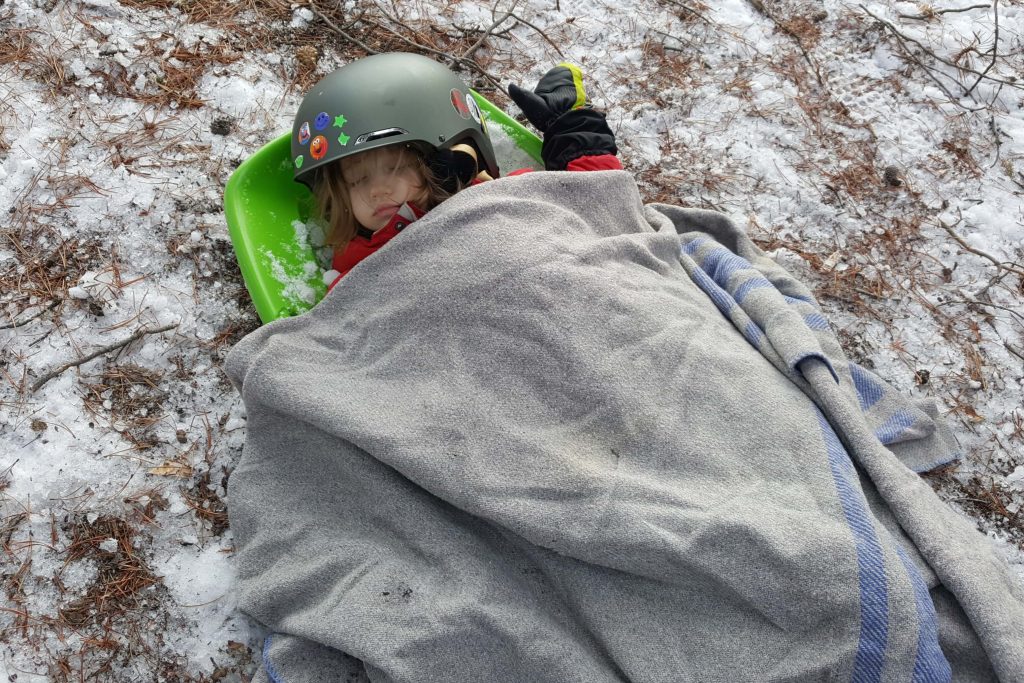
How to keep toddler’s hands warm in winter
Make sure your toddler’s mittens are water/wind proof and warm. Long wrist/arms and a tightening pull or Velcro strap around the wrist can help tighten the mittens on and prevent your toddler from pulling them off. You can have your toddler wear a second thin mitten or glove under their water poof mittens for added warmth.
Tips and Tricks for keeping mittens on toddlers:
Long sleeve mittens: Find mittens with really long sleeves and have your toddler put these on before they put their jacket on. The jacket sleeve will help hold the mittens on.
The magic thumb hole trick: If your toddlers insist on pulling mittens off try cutting a thumb hole in one of their warm shirts. After the mittens get put on the sweatshirt wrist gets pulled all the way down over the mitts so the now mittened thumb can go through the hole. Then the jacket. So, now the mittens are being held on by both the thumb hole in the sweatshirt and the tightness of the jacket sleeve. Also, tighten those jacket wrist straps if you have them!
Fingerless gloves over mitts: The goal of the fingerless gloves and the sweatshirt with a thumb hole are the same… these lock the gloves by being worn over the gloves.
Here’s a quick diy tutorial for the DIY fingerless gloves from socks:
How to keep toddler’s face warm in winter
The balaclava is great at keeping a toddler’s face warm in the winter. You can find ones that fit loosely or snug on the face, ones that cover their nose or keep their nose free. You may need to experiment with face covering so find one that you toddler is comfortable wearing. Having your toddler wear their hood up will also cut down the wind against their face and will help keep them warmer.
If it isn’t cold enough for a balaclava a neck warmer can help. One trick I’ve discovered for my toddlers is to use an ear (head) band around their neck. It’s not as wide as a buff so is less bulky for them but still helps cover that gap around the neck.
How to keep toddler’s feet warm in winter
Make sure your toddler’s boots fit properly. They need to be roomy enough to wear thick warm socks underneath without being too tight. Choose winter boots that have an appropriate cold temperature rating for your climate. Making sure that your toddler’s upper body and legs are warm will also help their feet stay warmer.
If you toddler will be riding in a sled or wagon, bring along an extra blanket to cover them and their feet up when they’re not moving around so they don’t get chilled.
How to keep snow out of kid’s boots:
- Get snow boots that go half way up your child’s legs
- Make sure the snow pants fit properly are aren’t too short
- Tuck the inside liner of their snow pants down into their snow boot and pull the outside pant leg down over the outside of their snow boot
- If this doesn’t work, try pulling the inside liner down over the outside of the snow boot
- Make sure the top of the snow boots are tightened if there is a way to do so, and if the snow boots are loose you could try having the child wear leg warmers bunched around the top of the boot area to fill that gap.
- Some snow pant liners even have clips to attach to laces or straps on snow boots to help keep them down and snug if pulling them over the boots.
- Another option is to attach stirrups to the inside liner of the snow pants to help hold them down in the snow boot onto the foot
- Lastly, some parents do find that pushing the entire snow pant down into the boot and tightening the boot tops does keeps snow out, but my kids have complained that this is uncomfortable for them
This is a common question and I’ve found that it depends mostly on the snow pants and whether or not they have an inside liner which can be pushed into the snow boot. Some liners are attached to the pants too low down making this a challenge.
A few last FAQs and tips for helping kids stay warm
Plan lots of warm-up breaks:
When it’s really cold out, we just plan shorter outdoor adventures.
We might choose activities close to indoor locations for warming up if we need to.
For example, we’ll go cross country skiing where we know there are warm-up huts. We’ll go skating where we know there is a campfire or cafe with hot chocolate nearby. Maybe we’ll go for a walk to a coffee shop (for a warm cup and treat). And when at the ski hill, we just plan to go inside the lodge after every few runs.
Often times these anticipated indoor breaks helps the kids stay warm and motivated to go do the activity in the first place.
Fuel for warmth
Snacks and food will keep bellies full and bodies warmer. For longer outdoor adventures make sure to bring along some yummy and healthy snacks that your kids will love. And, if heading out into the snowy backyard, going out after breakfast or lunch will ensure they’ve got fuel to keep them going.
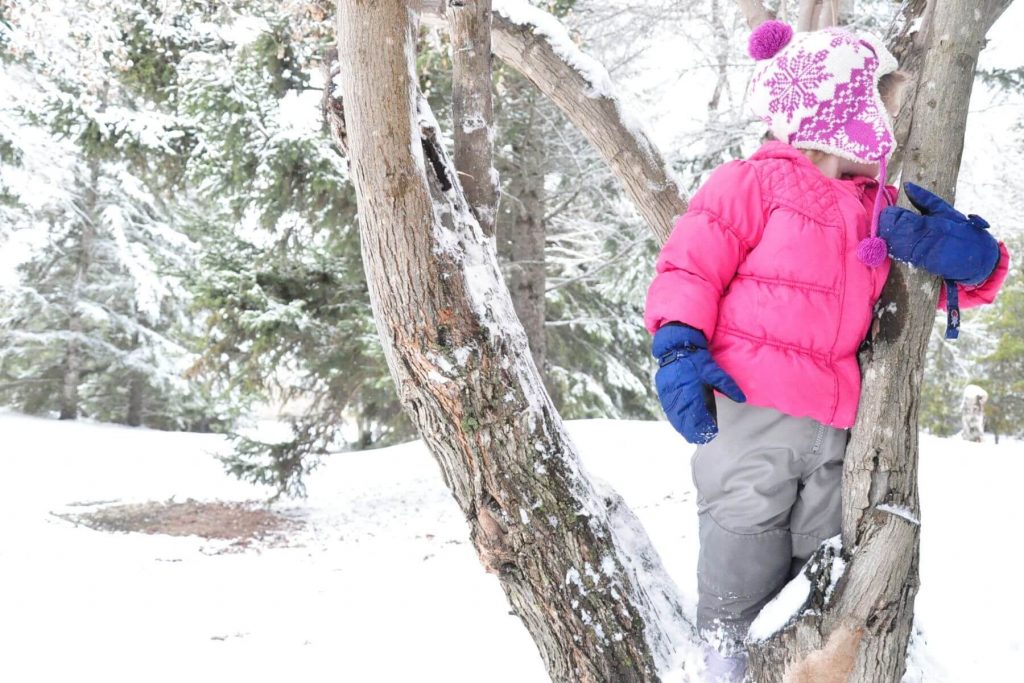
Have fun
It’s amazing how kids will be warmer if they’re having fun! It could be the exact same conditions and temperature but if the kids are enjoying themselves they’ll handle the cold better. So, maybe you’ve been dying to go for a hike, but in the cold, to keep them moving and motivated, maybe choose a more kid-friendly activity like sledding, skating, or exploring the frozen creek?
For toddlers and young children, here’s a whole list of fun snowy backyard activities. For older kids, you could try wild ice skating as a new exciting adventure!
And, if all else fails, and no one is staying warm, then call it a day. Sometimes it is just too cold to be outside for long! So, share some hot cocoa, and cuddle with a great family snowy movie instead!

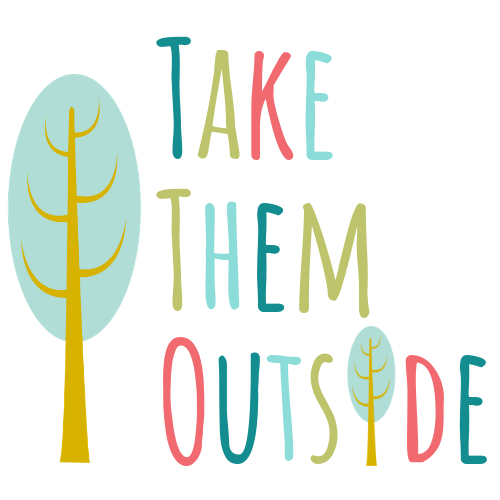

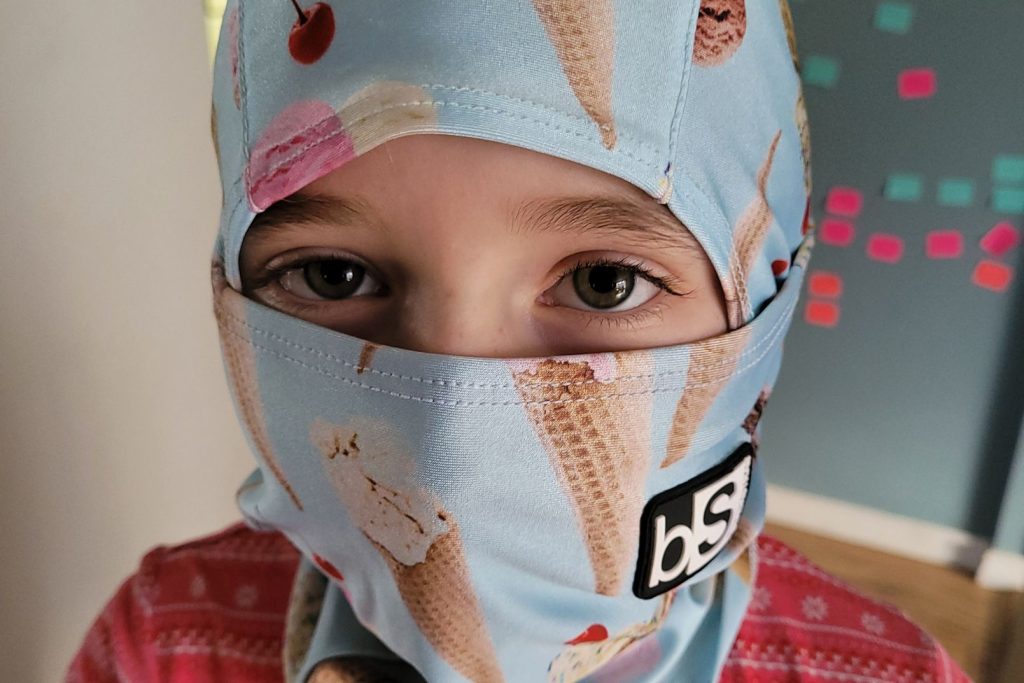


 <
<